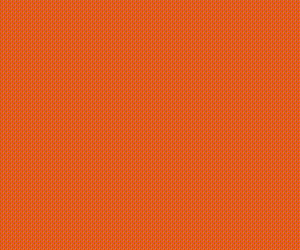-
 Home
Home
-
 News
News
-
 Colleges
Colleges
Pakistan's Largest Database of Colleges and Universities
Explore Largest Directory of Private and Govt. Colleges, Universities and find best institute for your future Education.
-
 Courses
Courses
-
 Admission
Admission
-
 Lectures
Lectures
-
 Online Test
Online Test
Short Question
- 9th Class Physics Short Questions
- 9th Class Chemistry Short Questions
- 9th Class Math Short Questions
- 9th Class Biology Short Questions
- 9th Class Computer Short Questions
- 9th Class English Short Questions
- 10th Class Physics Short Question
- 10th Class Chemistry Short Question
- 10th Class Math Short Question
- 10th Class Biology Short Question
- 10th Class Computer Short Question
- 10th Class English Short Question
-
 Past Papers
Past Papers
-
 Date Sheets
Date Sheets
-
 Results
Results
Exam Results 2024
Check online Results 2024 Matric Inter BA BSc B.Com MA MSc M.Com CSS PCS MCAT ECAT of all educational boards and universities in Pakistan
-
 Study Abroad
Study Abroad
Study Abroad Programs and Opportunities for Pakistani Students
Explore free study abroad search to find programs, consultants, events to study in USA, UK, Australia, China, Malaysia and many others.
-
 Jobs
Jobs
-
 Tutors
Tutors
-
 More
More
-
 Apps
Apps
10th Class Mathematics English Medium Chapter 6 Test
If you are looking for an effective and beneficial test session for 10th class maths subject, then you are on the right page. This page is especially designed for the students to conduct the online test for the 10th class maths unit 6 mcqs. Students can try to solve this mcqs test from the comfort of their home, and it is absolutely free. Students can prepare better for their board exams by attempting this math mcqs test. You can start attempting this test by just clicking the "Start Chapter 6 test" button. On this page, we have also explained the whole process of attempting our online mcqs test and the additional features of our online test system.
Mathematics 10th Class English Medium Unit 6 Online Test
Try the Mathematics 10th Class English Medium Unit 6 Online Test.
-
Total Questions15
-
Time Allowed20
Question # 1
If θ lies in 2nd (second) quadrant then sin θ and cosecθ are:
Question # 2
In class (30-39), lower class limit is....
Question # 3
If tan θ = √3 then θ =____________.
If tan θ = √3 then θ =____________.
Question # 4
Mean is affected by change in;
Question # 5
Sum of the deviations of the variable x from its mean is alwyas....
Question # 6
The standard deviation is 6 then its variance is...........
Question # 7
An ______________ is defined as the union of two non-col-linear rays with some common end point:
Question # 8
The spread or scatterness of observations in a data set is called:
Question # 9
The square of standard deriation :
Question # 10
The reciprocal of Arithematic mean of reciprocal of values is called:
Question # 11
The observations that divide a data set into four equal parts are called:
Question # 12
The measure which determines the middle most observation in a data set is called.
Question # 13
The difference between upper limit of two consecutive classes is a frequency table is called:
Question # 14
In the given set of data 5,7,7,5,3,7,2,8,2 mode is:
Question # 15
Tan 90 =_________.
This online test contains MCQs about following topics:. - Frequency Distribution.
- Cumulative Frequency Distribution. - Measures of Central Tendency. - Meassures of Dispersion.
Top Scorers of Mathematics 10th Class English Medium Unit 6 Online Test
-
M Musna Zulfiqar 19 - Aug - 2024 01 Min 46 Sec 14/15 -
M Musna Zulfiqar 19 - Aug - 2024 01 Min 46 Sec 14/15 -
M Musna Zulfiqar 19 - Aug - 2024 01 Min 46 Sec 14/15 -
M Mahreen 19 - Mar - 2024 01 Min 26 Sec 13/15 -
M Musna Zulfiqar 19 - Aug - 2024 01 Min 27 Sec 13/15 -
M Musna Zulfiqar 19 - Aug - 2024 01 Min 27 Sec 13/15 -
H Haseebraza Haseebraza 28 - Jun - 2024 01 Min 52 Sec 13/15 -
A Aneeb Shah 04 - Dec - 2024 03 Min 10 Sec 13/15 -
M Musna Zulfiqar 19 - Aug - 2024 01 Min 21 Sec 12/15 -
M Musna Zulfiqar 19 - Aug - 2024 01 Min 21 Sec 12/15 -
H Hadia Noor 25 - Mar - 2024 02 Min 06 Sec 12/15 -
N Nabiya Matloob 25 - Mar - 2024 02 Min 43 Sec 12/15 -
H Huda Ali 23 - Mar - 2024 02 Min 51 Sec 12/15 -
M Musna Zulfiqar 19 - Aug - 2024 01 Min 10 Sec 11/15 -
M Musna Zulfiqar 19 - Aug - 2024 01 Min 10 Sec 11/15

.gif)
















.png)

